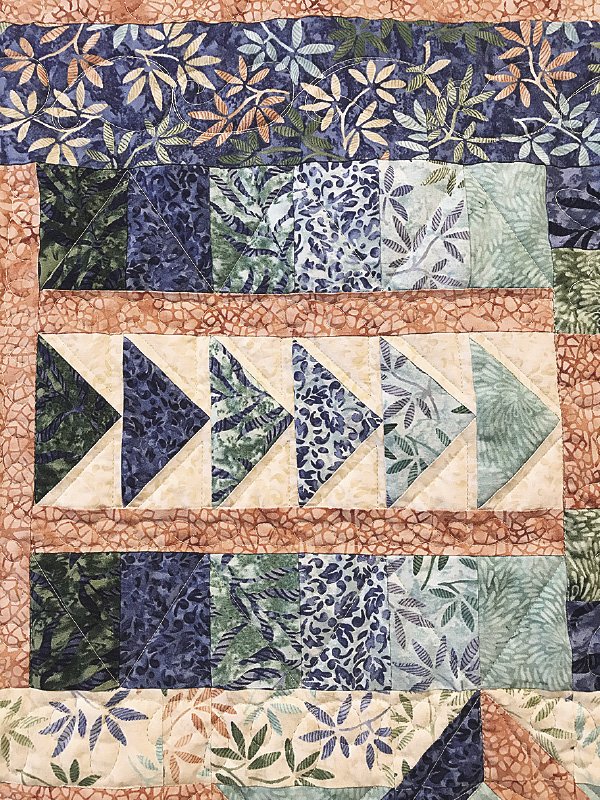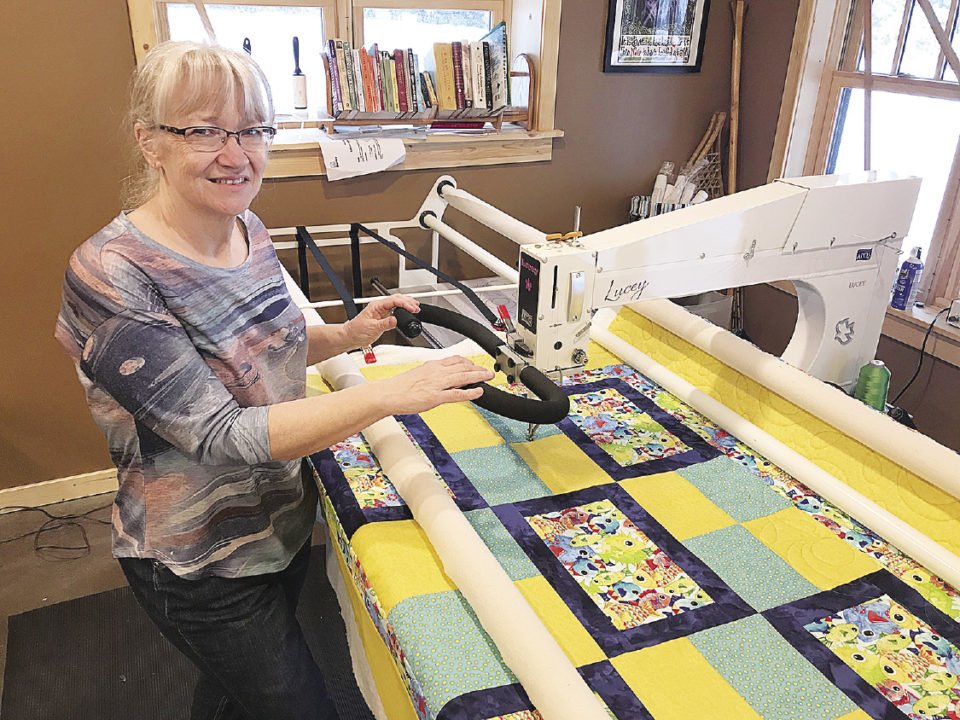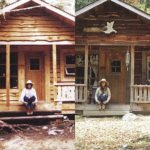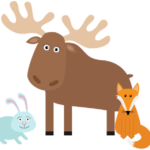Quilting—the craft of stitching together layers of fabric to create warming, functional works of art—is a tradition that has been around for thousands of years. Like the heat from a wood stove or the sweetness from a cup of cocoa, a well-made quilt has the unique ability to bring hygge to the darkest winter night, making any room feel a little more like home.
Along the North Shore, local artist Carol Morgen is carrying on the quilting tradition of turning cold into cozy with her talents in longarm quilting. While Morgen frequently spends time working on projects of her own creation, she also takes on a variety of commissioned work that includes longarm finishing quilt tops, creating ‘T-shirt’ quilts as gifts, and putting together entire quilts from start to finish of a desired fabric and pattern.
Originally from the small town of Cameron, Wisc., Carol and her husband Mark recently made the move up to Grand Marais after having spent the past 20 years living in the Hudson area.
“We love it here,” says Morgen when asked about her and her husband’s decision to make a home on the North Shore. “The Boundary Waters was a big draw, especially for my husband who loves to camp and canoe. I like [the BWCA], too, but for me, I mean, Lake Superior is really what drew me to this place.”
In addition to the natural beauty of the North Shore, Morgen credits the welcoming community and strong art culture as motivating factors for choosing Grand Marais as a place to live and pursue her craft.
“I have always been impressed by the incredible art culture of this place,” says Morgen, “and also by the people. I don’t know if diversity is the right word, but the acceptance of people of any background is part of what makes this community special. Whoever you are, you are accepted here.”

Morgen first became interested in quilting 25 years ago after being inspired by the work of her son’s first grade teacher who was an avid quilter. Morgen started as most quilters do by sewing together fabric into patterns, creating the quilt top before sending that top off to be finished by someone with a longarm quilting machine.
Longarm quilting—the skill that Morgen specializes in today—is the final step in creating a quilt where a longarm sewing machine is used to connect the quilt top, batting, and backing into a finished quilt. This is accomplished by sewing the different sections together in a series of intricate patterns that serves to complement the beauty of the underlying design of the quilt top.
Over the years Morgen continued to develop as a quilter by sewing together quilt tops. Then, about 10 years ago, she had her first experience in longarm quilting when a woman near her home in Roberts, Wisc., opened a business that rented time on a longarm quilting machine.
“Renting time on the machine in Roberts is how I first got into longarm quilting,” says Morgen. “But when we moved to Grand Marais I didn’t know anyone with a machine, so I either had to ship my quilts elsewhere to have them finished or make the trip to Roberts to finish them myself. This felt ridiculous, so I looked into buying my own machine and ultimately that’s what I ended up doing.”
Since having been first introduced to the craft of longarm quilting in Roberts, Morgen has since further developed her talents by taking classes from the renowned longarm quilter Karen McTavish of McTavish Quilting Studio in Duluth.
Though skilled in all facets of quilting, Morgen specializes in the longarm portion of the quilting process using a variety of techniques in her work that range from custom “free-form” quilting to pantograph or “edge-to-edge” methods of finishing a quilt.
Morgen uses her longarm quilting machine, the Lucey Model from American Professional Quilting Systems (APQS), to sew intricate patterns onto quilt tops of both her own creations and those of clients that bring in their colorful tops for her to finish.
“A lot of longarm quilting machines these days are computerized,” says Morgen, “but mine is definitely not. With computerized machines you set the pattern, press go, then step back and watch the machine sew, and while this can lead to some incredibly precise patterns, for me it lacks a creative element because it is not the person who is physically doing the work.”
Morgen believes that she does her best work when starting with a pattern, a concrete idea to guide her sewing, then letting the creativity emerge from the physical act of guiding the machine. However, as she looks towards the future, Morgen plans to continue challenging herself to break free from the use of patterns, instead relying on “the beauty of nature” to inspire her work.
Examples of Morgen’s work can be found on her Facebook page, Pincushion Quiltery.




